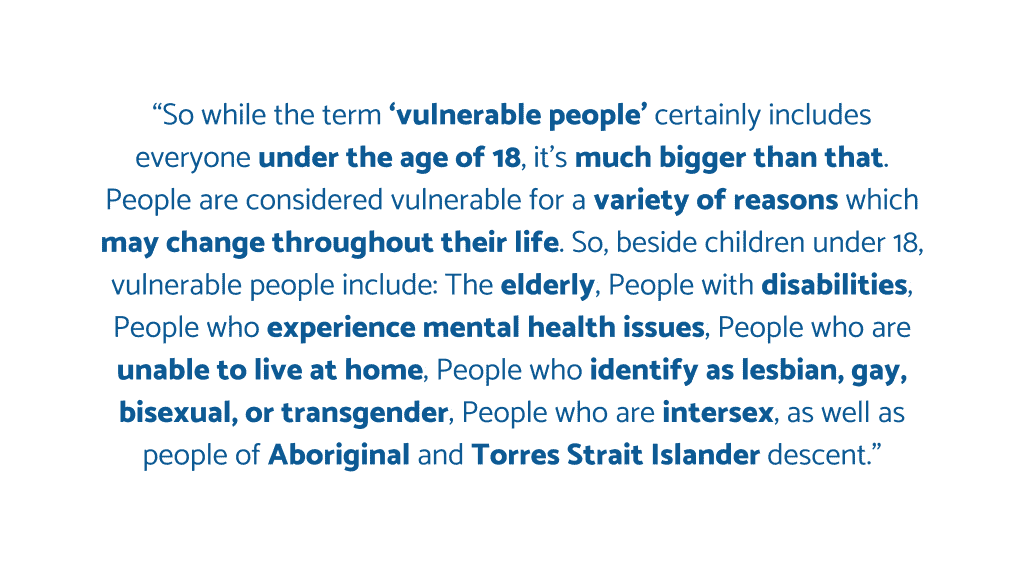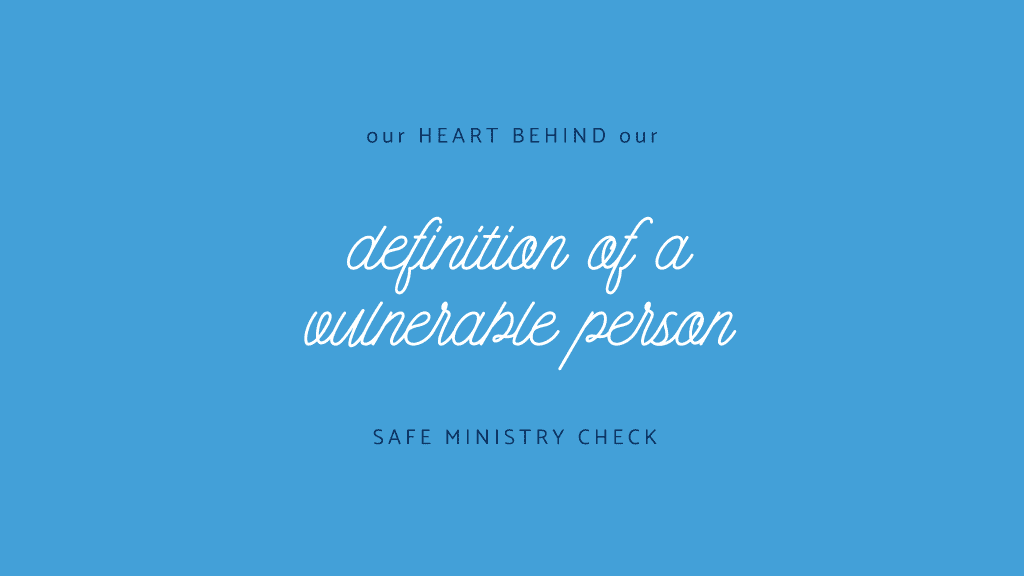At Safe Ministry Check, our mission is to help churches foster cultures of safety and care. We’re often asked why our training includes LGBTQI+ individuals within our definition of vulnerable people — and we welcome that question.
We understand that churches may differ in belief, language, and pastoral approach on matters of gender and sexuality. But when it comes to safeguarding, our aim is to equip ministries to prevent harm and protect those most at risk — because that’s what safe ministry is all about.

Vulnerability, Not Ideology
The inclusion of LGBTQI+ individuals in our safeguarding framework is not about endorsing a particular ideology or worldview. Instead, it reflects a reality supported by significant research: people who identify as LGBTQI+ — particularly children and young people — are at higher risk of experiencing harm, exclusion, and abuse.
For example, research from Headspace and Beyond Blue shows that:
- LGBTQI+ youth are five times more likely to attempt suicide than their non-LGBTQI+ peers.
- 61% of LGBTQI+ young people report experiencing verbal abuse, and 18% report physical abuse due to their identity (Writing Themselves In 4, La Trobe University, 2021).
- Rates of homelessness and mental health challenges are disproportionately high among LGBTQI+ young people (Australian Institute of Health and Welfare, 2021; National LGBTI Health Alliance, 2020).
These statistics don’t call for theological compromise — they call for care.
Grounded in National Safeguarding Standards
Safe Ministry Check aligns with the 10 National Principles for Child Safe Organisations, which serve as the foundation for safeguarding across Australia. Principle 4 in particular outlines the need for inclusive and culturally safe environments. It calls organisations to:
“Pay particular attention to the needs of Aboriginal and Torres Strait Islander children, children with disability, children from culturally and linguistically diverse backgrounds, those who are unable to live at home, and those who identify as lesbian, gay, bisexual, transgender and intersex.”
In this context, inclusion doesn’t mean agreement with every belief or identity. It means reducing the risk of abuse, bullying, or discrimination by ensuring our churches are places where every individual is treated with dignity and respect.
Respecting Difference, Committed to Safety
We recognise that churches will vary in how they express theological convictions. We also understand that safeguarding frameworks can sometimes feel like they’re at odds with those convictions.
But our role at Safe Ministry Check is not to shape a church’s doctrine. It’s to help churches meet their legal obligations, reflect best-practice safeguarding, and uphold the dignity of every person who walks through their doors — especially those statistically more likely to be harmed.
Whether or not a person agrees with another’s identity or choices, intentionally or repeatedly shaming someone for their gender or sexuality is still a form of psychological abuse. And we believe the Church must be above reproach in how it cares for all people.
A Call to Compassionate Care
When Jesus spoke of welcoming the little ones and protecting the vulnerable, he wasn’t drawing fine distinctions — he was calling his followers to embody his heart. Our prayer is that our training equips your church to do just that: to build a culture where everyone is safeguarded and where the vulnerable — whoever they may be — are protected.
If you have questions or would like to review the specific language used in our courses, we invite you to explore our full course scripts in your administration portal. And as always, our team is here to help clarify any concerns or feedback you may have.
Thank you for partnering with us in making our churches safer places for everyone.

